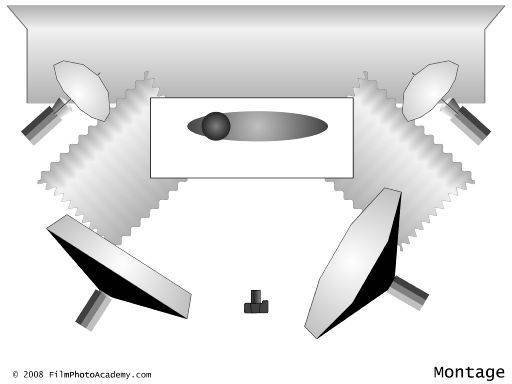Special Effects with Layering and Montage

The intent behind these first two images is to layer the cloth or clothes over the nude image, to give a controlled sense of translucency to the materials.
In the top image with the golden drapes I'm very pleased with this effect, it is as I pre-visualised it.

In the second image the technique does not really work as the form of the dress does not really match the style I was looking to achieve.

In this final image, I am using a much more convential montage, a digital version of the split-screen effect or masked negatives of old.
Essentially these are two digital images layered on top of each other. The unwanted portion of the top image being deleted away to reveal the figure in the image below.
With these types of images, you must take some care in ensuring that eye-lines and any hand to prop or hand to hand type contacts are carefully aligned, preferably in the taking stage where it is very easy.

Lighting Diagram
Our lighting setup here is complicated because of the layers of background to foreground. Essentially the background has its own illumination to prevent shadows from the main set falling on the "sky" of the background.
In terms of the montaging, the lighting is not relevant, except when you create your own montage, the lighting must remain constant and unchanging.
Model: IvoryFlame
share:
You can learn how to develop your own lighting, posing and directing skills with our extensive and intensive range of video programs available on DVD or download.
Videos on DVD / Download